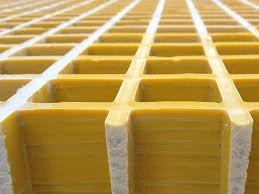loading...
- No. 9, Xingyuan South Street, Dongwaihuan Road, Zaoqiang County, Hengshui, Hebei, China
- admin@zjcomposites.com
- +86 15097380338
- Welcome to visit our website!
glass fiber reinforced polymer rebar
Glass Fiber Reinforced Polymer Rebar A Revolutionary Advancement in Construction
In the realm of construction and structural engineering, the demand for materials that enhance durability, reduce weight, and improve resistance to environmental factors is ever-growing. One innovation that has taken the industry by storm is Glass Fiber Reinforced Polymer (GFRP) rebar. This composite material is rapidly gaining popularity as an alternative to traditional steel rebar due to its unique properties and advantages.
GFRP rebar is made by combining glass fibers with a polymer matrix, typically epoxy or vinyl ester. This innovative composition results in a material that is not only lightweight but also exhibits outstanding tensile strength, making it suitable for a wide range of applications in construction. The use of glass fibers significantly enhances the mechanical properties of the polymer, providing a robust solution to the challenges facing traditional construction materials.
Glass Fiber Reinforced Polymer Rebar A Revolutionary Advancement in Construction
Another significant advantage of GFRP rebar is its lightweight nature. Compared to its steel counterpart, GFRP rebar is approximately one-fourth the weight, which simplifies handling and installation on construction sites. This reduction in weight not only eases transportation logistics but also allows for faster construction timelines. By decreasing the labor required for installation, project efficiencies can be achieved, resulting in lower overall costs.
glass fiber reinforced polymer rebar

Furthermore, GFRP rebar boasts non-magnetic and non-conductive properties, which are invaluable in specific applications. For instance, in areas where electromagnetic interference must be minimized, such as in hospitals or certain military applications, GFRP provides a strategic advantage. Additionally, its thermal properties help maintain consistent temperatures in the surrounding environment, shielding sensitive equipment and ensuring operational integrity.
Despite these advantages, GFRP rebar is not without its challenges. One notable concern is its higher initial cost compared to traditional steel rebar. However, this initial investment is often offset by the long-term savings associated with reduced maintenance, extended lifespan, and enhanced performance in harsh conditions. As awareness of the benefits of GFRP grows within the construction industry, economies of scale may help to reduce costs further.
Moreover, the manufacturing processes of GFRP rebar have evolved over time, and advancements in technology are continuously improving its efficiency and effectiveness. Research and development efforts into optimizing the composition and production methodology of GFRP are leading to even greater performance characteristics, making it an increasingly appealing option for engineers and builders.
In conclusion, Glass Fiber Reinforced Polymer rebar represents a significant advancement in construction materials, offering a multitude of benefits that have the potential to revolutionize traditional practices. Its corrosion resistance, lightweight nature, and specialized properties position it as a sustainable alternative to steel rebar, particularly in environments where durability and longevity are paramount. As the construction industry continues to evolve, GFRP rebar is poised to play an integral role in shaping the future of infrastructure, contributing to safer, more resilient structures for generations to come. Embracing this innovative material could very well lead to a new era in engineering, where the focus lies not only on the strength of materials but also on their performance longevity and sustainability.
-
The Rise of FRP Profiles: Strong, Lightweight, and Built to LastNewsJul.14,2025
-
SMC Panel Tanks: A Modern Water Storage Solution for All EnvironmentsNewsJul.14,2025
-
GRP Grating: A Modern Solution for Safe and Durable Access SystemsNewsJul.14,2025
-
Galvanized Steel Water Tanks: Durable, Reliable, and Ready for UseNewsJul.14,2025
-
FRP Mini Mesh Grating: The Safer, Smarter Flooring SolutionNewsJul.14,2025
-
Exploring FRP Vessels: Durable Solutions for Modern Fluid HandlingNewsJul.14,2025
-
GRP Structures: The Future of Lightweight, High-Performance EngineeringNewsJun.20,2025
